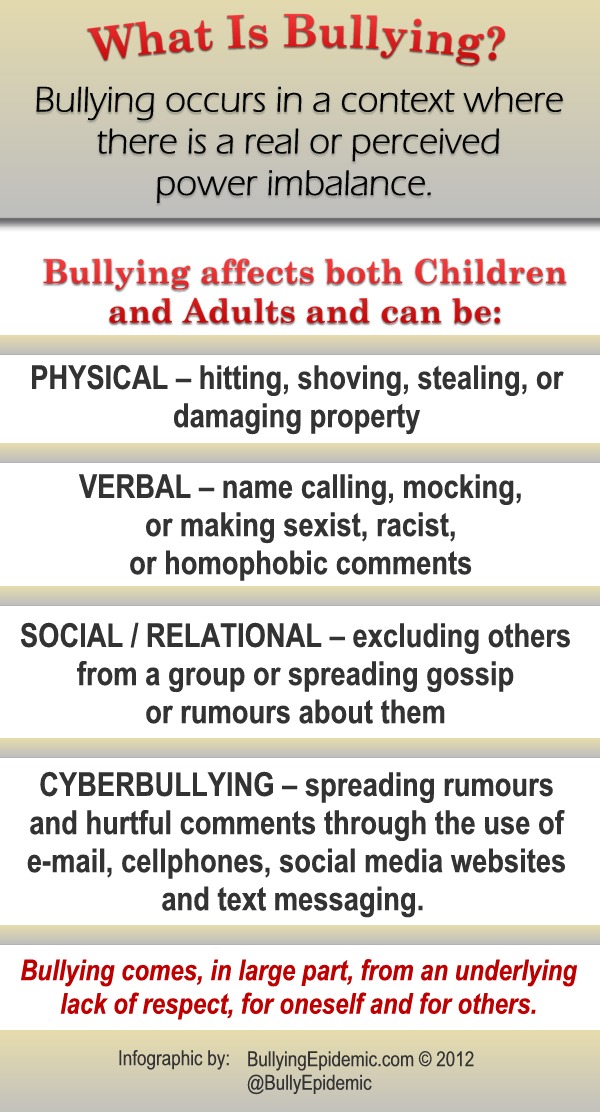A real problem with bullying prevention is the many “definitions” of bullying. Parents, teachers, all adults working with children, and the children themselves will all benefit from a more consistent definition of where “just kidding” leaves off and bullying begins. Part of the problem is that bullying keeps evolving – our widening understanding of aspects of bullying we’d previously ignored (yes, peers standing silently and rolling their eyes and sneering at you is part of bullying, even though no words are spoken) as well as the ever-changing technologies that permit new avenues for the “creative expression” of (how many middle school kids now have smartphones with 24/7 Internet and texting access?)
Bullying Definitions. Two books have helped to get adults and kids viewing the problem with consistency, through the same eyes and help us learn how to adapt as conditions evolve. Barbara Coloroso’s “The Bully, The Bullied, And The Bystander (Harper Collins, 2002) and Lorna Blumen’s Bullying Epidemic: Not Just Child’s Play (Camberley Press, 2010) describe bullying as characterized by:
- Persistent 1-way power imbalance; the bully has all the power, the target has none
- Deliberate use of power & aggression by the bully
- Intent to hurt the target – physically, socially, or emotionally (often a combination)
- Intent to cause fear, both in today’s attack & the threat of future attacks
- Repeated attacks, but don’t ignore the single occurrence
- Intensity escalates overtime
- Underlying lack of respect for self and others
- Bully’s underlying sense of contempt, entitlement, & lack of empathy for others
Working with younger children, we can use a simplified definition of bullying, adapted from Allan Beane’s book The Bully Free Classroom (Free Spirit Publishing, 1999):
Bullying is when:
- A stronger or more powerful person
- Hurts or frightens
- A smaller or weaker person
- On purpose
- One time or more
- With unkind words, unfriendly touching
- Or by keeping them from having friends
Types of Bullying. The 3 main types of bullying are: verbal, physical, and relational. Cyberbullying is primarily relational, but its complexity merits its own category. See the table below for examples of each kind of bullying behavior. Now that we know what bullying looks like, it’s a lot easier to tell where the “Oops, too far” line is and catch ourselves and others before we get too close.
.


